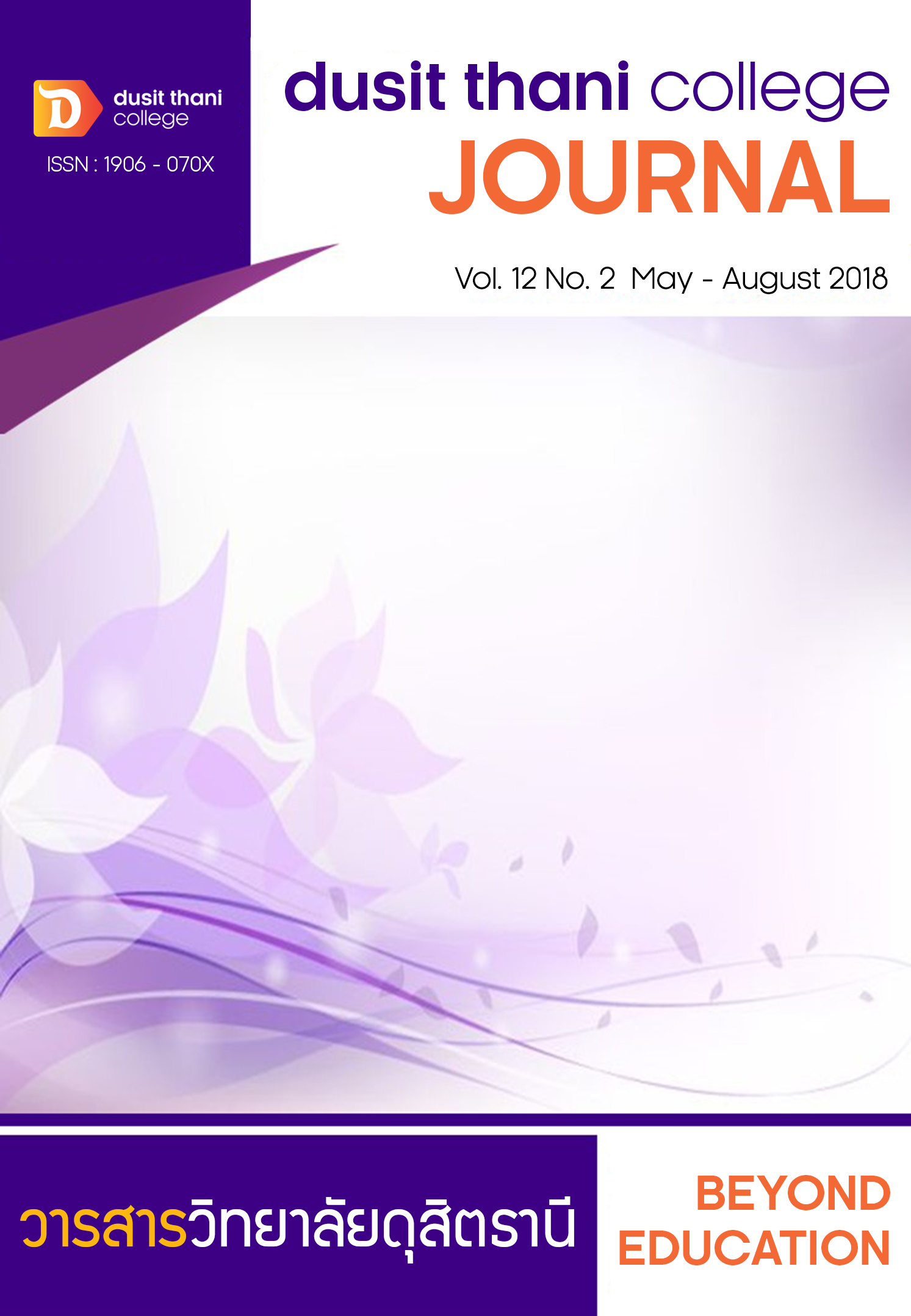The Influence of Semiotics Towards the Memorable Images of Destination Through the Intellectual and Cultural Capital
Main Article Content
Abstract
The objectives of this article are to study the semiotics principles, the implement of semiotics towards tourism and the typology of semiotics applied through the intellectual and cultural capital. The paper consists of the origin, definition and concepts of semiotics from 3 semantics Picrce, Saussure and Barthes. The concepts from these semantics shows a clear picture of giving the meaning in symbols related to society and environment or what is around the human also shows that culture plays a major role influencing the broad definition of the meaning the symbol. Nevertheless, this paper also offers the story of semiotics with tourism through an interpretation that has the identity to help developing cities, countries, and tourist destination through various symbols such as logos, language formats, signage, souvenirs, including mascots and lucky dolls. These have been created through the intellectual and cultural capital in the context of local community in Japan and very famous in this area of study by having Kawai Culture as supportive. These things influence the travel behavior of people and are the great tools for current tourism developers.
Article Details
Article Screening Policy
- All research and academic articles to be published must be considered and screened by three peer reviews in the relevant field / article.
- All articles, texts, illustrations and tables published in the journal are the personal opinions of the authors. Editors don't always have to agree. And no responsibility whatsoever is the sole responsibility of the author.
- The articles to be published must never be published. Where did you first publish? And not in the consideration of other journals If the audit found that there has been a duplicate publication It is the sole responsibility of the author.
- Any article that the reader sees as being plagiarized or impersonated without reference. Or mislead the work of the author Please let the journal editor know it will be your greatest blessing.
References
Chiemvisudhi, W. (2017). The sign and identity signification through the official Olympic
game emblem. Journal of the Veridian E-Journal, Silpakorn University, 10th , 1
(January - April 2017): 2077. (in Thai)
Culler, J. (1990). The Semiotics of Tourism. Criticism and Its Institutions: University of
Oklahoma Press.
Hawkes, T. (1977). Structuralism and Semiotics. 2nd ed. New York: Routledge.
Kaewthep, K. (2009). Media Analysis: Concept and Techniques. Bangkok: Faculty
Communication Arts, Chulalongkorn University. (in Thai)
Ministry of Tourism & Sports. (2015). Thailand Tourism Strategic Plan 2015 – 2017. (in Thai)
Nipponnotsubo.(2013) にっぽんの壷ビデオ. (online). from https://www.youtube.com/
channel/UCjpKPObRWWkhdhdCYVseccw. Retrieved on March 12, 2017. (in Thai)
Nipponnotsubo.(2013) にっぽんの壷ビデオ. (ออนไลน์). เข้าถึงได้จาก https://www.youtube.com/
channel/UCjpKPObRWWkhdhdCYVseccw. วันที่เข้าถึง : 12 มีนาคม 2560.
Peirce,Charles S. (1955). “Philosophical Writings of Peirce”. Selected and Edited with an Introduction by Justus Buchler. New York: Dover Publication.
Potts, Alex. (1996). “Sign” in Robert S. Nelson and Richard Shift. Critical Terms for Art
History. 2nd ed. Chicago and London: The University of Chicago Press.
Prachakol, N. (2001). Mythologies by Roland Barthes. Articles. Bangkok: Torchlight Printing
Project. (in Thai)
Pruangpong, P. (2014). Mascot Design for Chiang Mai Cultural Events. Master of Fine and
Applied Arts, Faculty of Fine and Applied Arts, Chulalongkorn University. (in Thai)
Sagyan, S. (2014). Growing Importance of Mascot & their Impact on Brand Awareness-A
Study of Young Adults in Bhubaneswar City, IJCEM International Journal of
Computational Engineering & Management, Vol. 17 Issue 6, November 2014
Saussure, Ferdinand de. (1959). “Course in General Linguistics” Edited by Charles Bally and Albert Sechehaye in Collaboration with Albert Riedlinger. Translated with an Introduction and Notes by Wade Baskin. New York: McGrawhill 1966.
Tongprasert, N. (2016). DE/SIGN/ED. 2nd ed. Bangkok: Urgent Tag Co., Ltd. (in Thai)
Wixsite.com. (2017) มารู้จัก Mascot กันเถอะ. (online). from https://wazabiiyui.wixsite.com/
wewalk/single-post/2017/06/20/%E0%B8%A1%E0%B8%B2%E0%B8%A3%E0%B8%
B9%E0%B9%89%E0%B8%88%E0%B8%B1%E0%B8%81-Mascot%E0%B8%81%E0%
B8%B1%E0%B8%99%E0%B9%80%E0%B8%96%E0%B8%AD%E0%B8%B0.
Retrieved on July 10, 2017. (in Thai)


